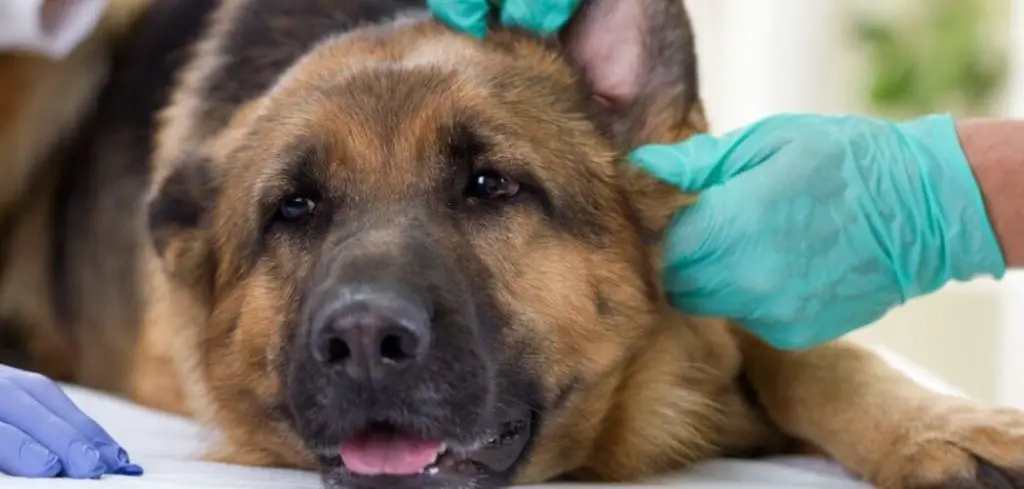When your dog is vomiting green liquid and refusing to eat, it’s often a sign of an underlying health issue that needs attention. The color and content of the vomit can give clues about what’s going wrong in their digestive system.
We outline the common causes of dog vomiting green liquid and not eating, what you can do at home, and when to seek veterinary help.
Dog Vomiting Green Liquid and Not Eating — Why It Happens
Dogs vomit green liquid and stop eating when their digestive tract is irritated or something toxic has been ingested. This green liquid is often bile, which can back up into the stomach when it’s empty, especially if your dog hasn’t eaten in a while. It can also indicate they’ve eaten grass, a foreign object, or even come into contact with toxins.
Other potential causes include gastrointestinal upset, pancreatitis, parasites, and more serious issues like liver or gallbladder disease.
It’s especially concerning when vomiting is paired with appetite loss, as this could suggest systemic illness that’s making your dog feel nauseated and weak.

Common Causes of Dog Vomiting Green Liquid and Not Eating
Bilious Vomiting Syndrome
Bilious vomiting happens when bile irritates the stomach lining, usually because the stomach is empty for long periods. Dogs may vomit greenish-yellow liquid, often in the morning.
It can cause nausea, drooling, and reluctance to eat. This condition is uncomfortable but manageable with small, frequent meals.
Left untreated, chronic bile vomiting can lead to inflammation of the stomach and more serious digestive problems.
Grass or Plant Ingestion
Dogs that chew on grass or certain houseplants may vomit green liquid shortly after. Grass can irritate the stomach, especially if ingested in large amounts or if sprayed with chemicals.
If your dog vomits shortly after being outdoors and refuses to eat, consider whether they may have eaten something they shouldn’t have.
This becomes more dangerous if the plant or substance was toxic, which could lead to more severe symptoms.
Read more: Dog Vomiting and Not Eating (Why it’s happening and what to do)
Pancreatitis
Pancreatitis is inflammation of the pancreas and often leads to vomiting, appetite loss, and abdominal pain.
Dogs with pancreatitis may vomit green liquid if bile is involved. The condition can be triggered by fatty foods, obesity, or underlying metabolic issues.
Pancreatitis requires prompt veterinary treatment, as it can quickly escalate and become life-threatening.
Gastrointestinal Obstruction
When a dog swallows something they can’t digest — like a toy, bone, or fabric — it may cause a blockage.
This can prevent food from passing and result in vomiting bile or green liquid, as nothing else is in the stomach.
Obstructions are medical emergencies and are often accompanied by signs like bloating, lethargy, whining, or straining to defecate.
Liver or Gallbladder Disease
The liver and gallbladder are essential for processing waste and producing bile. If these organs are diseased, bile can build up or be released irregularly.
This dysfunction may cause vomiting, yellow-green discharge, appetite loss, and even jaundice (yellowing of eyes or gums).
Liver issues need professional diagnosis and management, often including bloodwork and imaging.
Intestinal Parasites
Worms or protozoa can irritate the GI tract, leading to green bile vomiting and decreased appetite.
This is especially common in puppies or dogs who are not on a parasite prevention program. Signs may include soft or green stool, weight loss, and scooting.
Regular deworming and fecal testing are key to preventing parasite-related illness.
What to Do If Your Dog Is Vomiting Green Liquid and Not Eating
First, withhold food for 8–12 hours to let your dog’s stomach rest, but continue offering water in small amounts.
If vomiting stops, you can introduce a bland diet like boiled chicken and rice in small portions to see if they tolerate it.
Monitor your dog closely. If the vomiting continues or they refuse to eat even bland food, do not delay veterinary care.
Avoid giving medications without veterinary approval — even common antacids can be harmful if the wrong condition is being treated.
Also consider recent changes: Has your dog gotten into the trash, eaten grass, or missed meals? These details help determine if the issue is dietary, behavioral, or medical.
When to Call or Visit Your Vet
Contact your vet immediately if:
Vomiting occurs more than twice in 24 hours
Vomit contains blood, black flecks, or appears like coffee grounds
Your dog is listless, shaking, or has a bloated abdomen
They refuse food for more than 24 hours
There’s diarrhea along with vomiting
You suspect your dog ate something toxic
Green vomit combined with appetite loss is not normal and should not be ignored, especially if accompanied by other symptoms like fever, pale gums, or pain.
Read more: Dog Throwing Up Yellow Bile and Not Eating and Shaking
Key Takeaway
Green vomit in dogs — especially when paired with appetite loss — is usually a sign that something’s wrong with the digestive system.
From mild bilious vomiting to serious conditions like pancreatitis or liver disease, the range of causes is wide.
Keep your dog hydrated, monitor their symptoms, and don’t hesitate to contact your vet when vomiting is persistent, green, or combined with other troubling signs.
With prompt care, most dogs recover quickly — but waiting too long can allow a manageable condition to turn serious.
